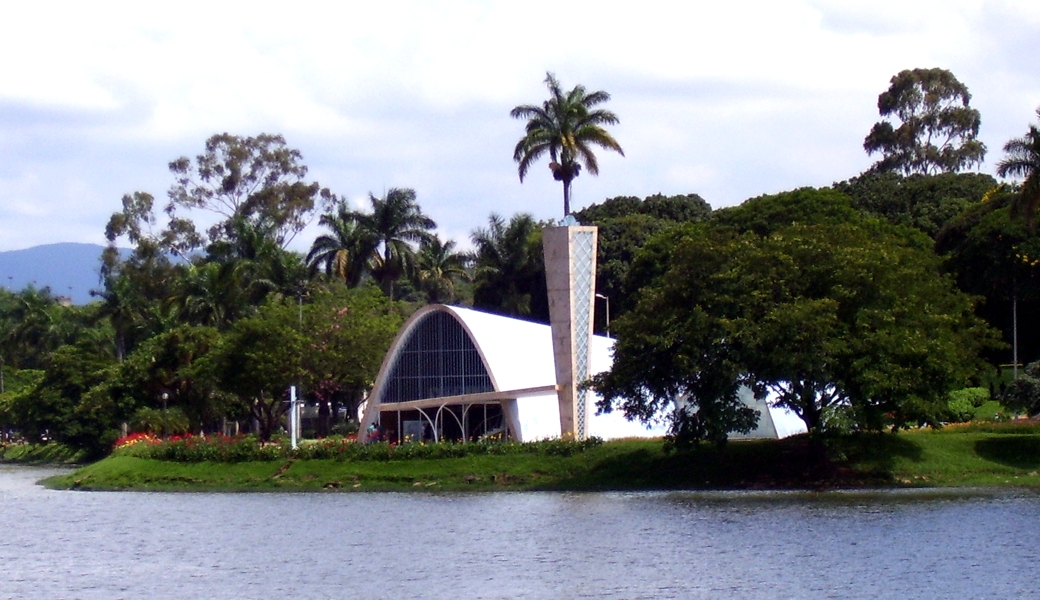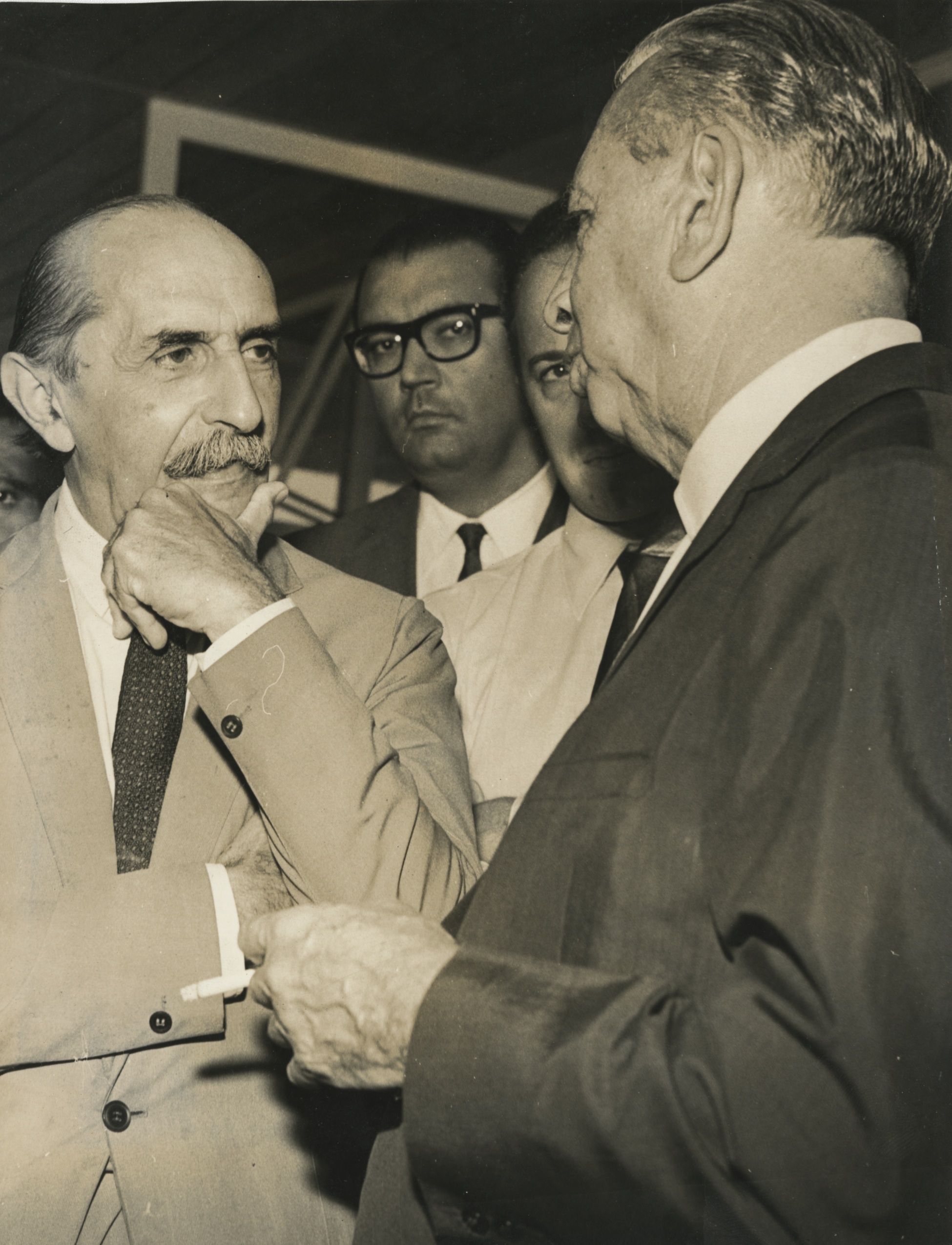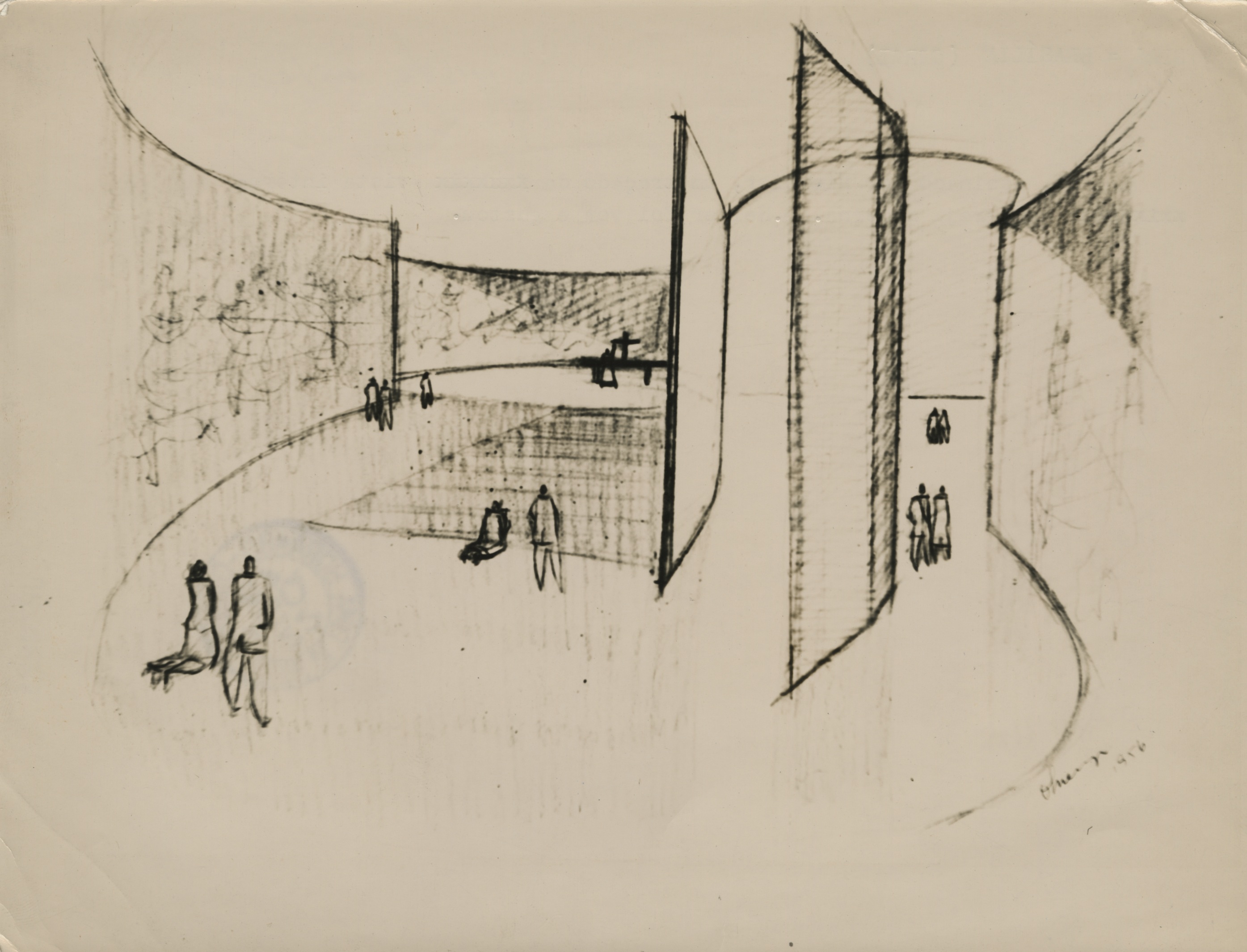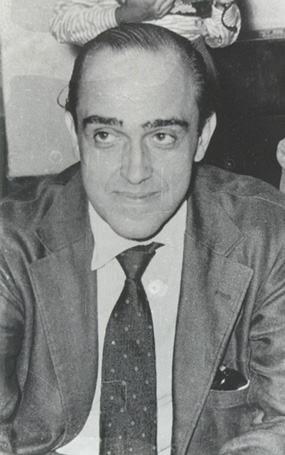An Attempt at Rapid, Visible Modernity
What you see here is our Brazilian way of improving things. We say one day that we’ll build a city, so we just go ahead with it. You Americans would do this differently. First, you would get plans drawn, then have engineers survey the site. Only then you would start building the capital and it would take you four years to get under way. But with us it’s improvisation. We say that we’ll do it, so we just go ahead with it and worry about each problem as it comes up (Szulc, 258).
So an engineer working on the construction of the new capital, Brasilia, described the process to a New York Times reporter in 1958. Hailed as a modernist miracle and intended to transform the nation as a symbol of modernity in the wilderness, Brasília was in the years around its construction, from 1956 to 1960, an enormous source of national pride, all the more acute as the city’s design was considered uniquely Brazilian. However, the construction of Brasília required an enormous reliance on foreign investment, which along with President Juscelino Kubitschek’s other development projects caused a huge rate of inflation and raised the overall cost of living. Though it was designed to unite all peoples and classes, the city was ultimately quite segregated, with only the very wealthy living in its center and enormous suburbs reaching out for miles around, where the middle and lower classes could afford to live.

The National Congress Building, on the Monumental Axis at the heart of Brasília, houses the Senate and the Federal Chamber of Deputies.
Modernism in Architecture
While the modernist influence reached into art forms such as writing, painting, and music, the element that was most essential to Brasilia’s declaration of cultural independence was modernism’s profound effect on Brazilian architecture. Just as European styles had dominated the rest of Brazilian culture, the nation’s new architecture of the nineteenth century progressed along a French model. This is best evidenced by the theaters, libraries, government buildings, and boulevards that dominated Rio De Janeiro at the turn of the century.
However, the arrival of modern architecture in Brazil allowed for new improvisation and creativity among Brazilian designers and left them with a feeling that the style was their own, as well as a sign of progress toward the future. As the decades progressed, modernist architecture dominated Brazilian cityscapes more and more. Meanwhile, modernist architects and planners like Oscar Niemeyer and Luis Costa transformed into figures of national pride and international acclaim. By the time President Kubitschek decided in the fifties that Brazil would build its new capital, “the desire to possess a distinctively Brazilian capital, a city immune to less constructive forms of foreign influence,” had overtaken the nation, making the huge undertaking possible, as had not been true in the past.
The Planners
Oscar Ribeiro de Almeida Niemeyer Soares Filho is commonly considered “one of Modernism’s greatest luminaries.” He is known for constructing monumental buildings: in addition to many of the grandest buildings of Brasília, he designed Brazil’s pavilion in the 1939 World’s Fair and museums and government buildings across the country.
Niemeyer’s style placed a great emphasis on curves and free, open spaces. As he described it in his memoirs,
I am not attracted to straight angles or to the straight line, hard and inflexible, created by man. I am attracted to free-flowing, sensual curves. The curves that I find in the mountains of my country, in the sinuousness of its rivers, in the waves of the ocean, and on the body of the beloved woman. Curves make up the entire Universe, the curved Universe of Einstein (Niemeyer, 62).
President Kubitschek called on Niemeyer to serve as the principal architect for the construction of Brasília, but he insisted on a national contest to select a city planner, who would design the layout of the new capital.

The Church of São Francisco de Assis, a part of the Pampulha Project in Belo Horizonte, Minas Gerais, was Niemeyer’s first national monument. It was commissioned by Juscelino Kubitschek when he served as mayor of Belo Horizonte and began a long working relationship between the two. Courtesy of Wikimedia Commons.
Despite the national pride evident in his design for the new capitol, Niemeyer’s relationship with his country was fraught for much of his adult life. A member of the Brazilian Communist Party since 1945, he was removed from his position as a university professor and exiled to Europe during the military dictatorship. His designs for the buildings of Brasília reflect his socialist leanings: all the residential buildings in the city were to be owned by the government and rented to its citizens, with no segregation by class or rank.

Lúcio Costa, shown here with the politician Negrão de Lima, was the city planner who designed the layout of Brasília. He envisioned the city as a giant cross resembling an airplane. Courtesy of the Arquivo do Estado de São Paulo.
Lucio Marçal Ferreira Ribeiro Lima Costa, who had previously worked with Oscar Niemeyer on the construction of a new ministry of education and several other projects, was chosen as the city planner of Brasília through a national contest organized at Niemeyer’s request. Some critics question his selection, arguing that he was chosen as planner for political reasons or due to his connection to Niemeyer. In his original plan, the Plano Piloto, submitted to the selection committee, he included only 15 freehand sketches for the city’s design and a statement of purpose with 23 articles. Despite the city’s stated project of social change, Costa’s plan included no description of Brasília’s intended social structure, nor of its anticipated effects.
Five of the six jurors judging submissions by Costa and other potential city planners praised his design for its clarity and simplicity and for having a clear ideology of progress. Sir William Holford summed up this feeling in his remarks on Costa’s proposal:
At the first reading of his report, one realized that here was a thinker, an urbanist, of the first order. On second reading one realized that there was not a single unnecessary word in the report, and not a single unnecessary word in the report, and not a single unnecessary line in the sketch plan or diagrams: yet everything essential was said (Holston, 64).
Yet while praised internationally and domestically as a monumental building project, Brasília’s design did not yield the desired social changes. Costa’s plan did not account for most of the vast suburbs that rose up around the city center to accommodate the millions of people who moved to the new capitol but could not afford to live in its center. From the beginning, the buildings that were intended to provide housing at all echelons of society did not accommodate the workers recruited to build the city; the lower classes that lived in these government residencies were low-ranking bureaucrats. Thus a new social hierarchy was established, privileging some types of work over others and making that distinction clear through physical location of people in different jobs.

Costa’s designs for the plan of the city were extremely minimal—15 freehand drawings and an idealized statement of purpose, leading to criticism over his selection that increased as Brasília did not become the utopia Costa had predicted. Courtesy of the Arquivo do Estado de São Paulo.
Whether intended from the beginning or an unplanned side effect of the city’s construction, this unplanned expansion and structural inequality can be attributed to Costa’s lack of a clear plan for social reform through urban planning, which was, according to its proponents, one of the original goals of the proposed city.
Economic Consequences
“Fifty years’ progress in five” was the rallying cry of President Juscelino Kubitschek’s plans to modernize and industrialize Brazil, of which the construction of Brasília was a centerpiece.
Yet that slogan was soon reworked by the president’s critics to read, “Fifty years’ inflation in five.” To finance the project in a country with chronically low savings and insufficient foreign investment to build a new city, Kubitschek’s regime printed money to finance public sector spending, thereby driving up prices and redirecting wealth to risky high-growth industries.
The dangers of the president’s financing plan were apparent even as the project began. Tad Szulc wrote in a 1957 New York Times article, “Even if the controversial Brasilia concept is basically sound, the Government is spending more money in its headlong rush to build the capital in four years than Brazil’s inflated and deficit-ridden economy can afford.”
Though the economic situation did not strike a substantial blow to the Kubitschek’s career—a bold spending program and a radical break from the International Monetary Fund garnered him huge popularity—after his term in office, the nation fell into political and economic turmoil, largely due to the spending on Brasilia. Eventually the nation’s uncertainty resulted in a military coup that transformed Brasilia from a symbolic bastion of popular democracy to a physical manifestation of tragic irony, at the same time furthering inequality throughout the country and discrediting the Brazilian government’s international legitimacy.

The nation’s magazines and newspapers joined its politicians in acclaiming the inauguration of the new capital as the dawn of Brazil’s new era of modernity and international significance. Courtesy of the Arquivo do Estado de São Paulo.
Juscelino Kubitschek entered office vowing bold plans for industrial development, which would make Brazil a more technologically advanced and independent nation. He quickly garnered international attention.
The construction of Brasília cannot be considered wholly as a sudden, rash development project—a plan for a centralized capitol had been in development since the 1820s, and the plan to move to a centralized capital named “Brasília” was written into the 1891 constitution. Yet as can be seen in the plans and statements of Brazilians involved in the project, as well as the observations of Americans following its development, the actual construction of Brasília, from design to completion, was executed in a strikingly short amount of time and without a clear idea of its effects on the economy and demographics of the nation.
While considered ill-conceived in terms of national development, however, Brasília is still a visually striking architectural model. A New York Times writer, criticizing Oscar Niemeyer himself for altering the buildings he designed, shows reverence for the original buildings:
Brasília’s Monumental Axis is not simply a relic from a discounted age or an emblem of a failed utopia. It is as crucial to the values of its time as the pyramids were to theirs. To mar that vision is a cultural tragedy, even if the creator’s hand is responsible (Szulc).
Further Reading
- Alex Shoumatoff’s The Capital of Hope: Brasília and its People tells the story of the creation of the city and profiles the lives of its inhabitants.
Sources
- Epstein, David G. Brasilia, Plan and Reality: A Study of Planned and Spontaneous Urban Development. Berkeley, Calif.: University of California Press, 1973.
- Evenson, Norma. Two Brazilian Capitals: Architecture and Urbanism in Rio De Janeiro. New Haven, Conn.: Yale University Press, 1973.
- Holston, James. The Modernist City: An Anthropological Critique of Brasília. Chicago and London: University of Chicago Press, 1989.
- Szulc, Tad. “Brazil Builds a New Capital.” The New York Times. 10 November, 1957.

